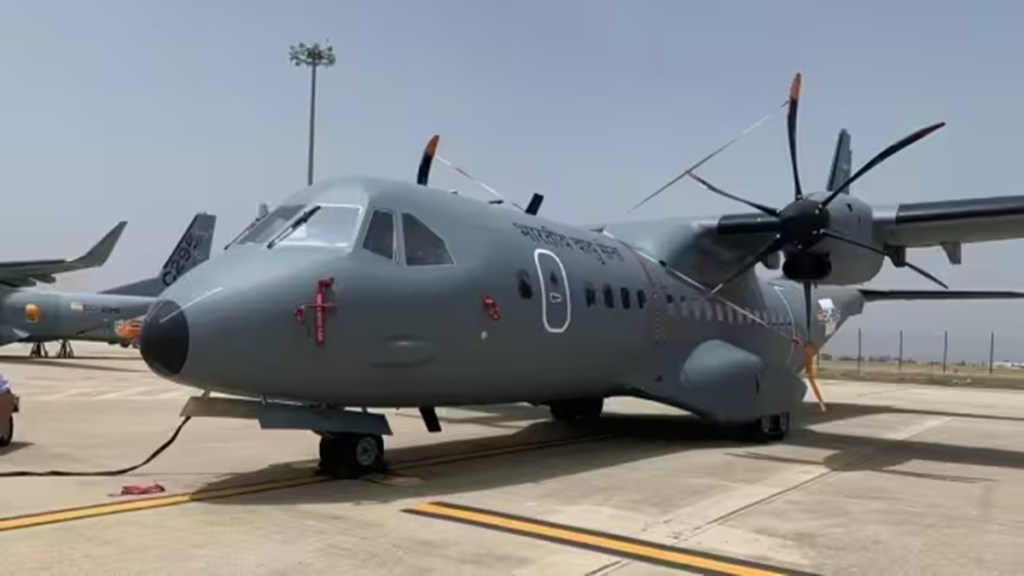The Defence Acquisition Council (DAC), chaired by Defence Minister Rajnath Singh, has put its stamp of approval on various capital acquisition proposals totalling Rs 84,560 crore. These include 16 indigenously built C295 for the Indian Navy and Coast Guard. These will be built in India by the consortium of Airbus Defence and Space and Tata Advanced Systems Limited (TASL). Approval has also been given for equipment that can be used against low flying drones also over the horizon UAV for mechanized forces.
These decisions underscore the importance of sourcing equipment from Indian vendors to promote self-reliance.
Under the Buy {Indian-Indigenously Designed Developed and Manufactured (IDDM) category, the DAC sanctioned the procurement of a new generation of Anti-tank mines equipped with seismic sensors and remote deactivation features for added safety.
Additionally, approval was granted for the procurement of the Canister Launched Anti-Armour Loiter Munition System to enhance operational efficiency and dominance in the Tactical Battle Area, particularly for engaging targets Beyond Visual Line of Sight by the Mechanised Forces.
Recognizing the need to strengthen Air Defence Systems, the DAC approved the procurement of Air Defence Tactical Control Radar under the Buy (Indian-IDDM) category. This decision emphasizes the importance of detecting slow, small, and low-flying targets, as well as improving surveillance, detection, and tracking capabilities.
According to an official statement issued by the Ministry of Defence on Friday, approval was granted for the procurement of Medium Range Maritime Reconnaissance and Multi-Mission Maritime Aircraft through the Buy and Make category. This move aims to bolster surveillance and interdiction capabilities of the Indian Navy and Indian Coast Guard (ICG) over the vast maritime area.
To stay ahead of potential threats, the Indian Navy will get Active Towed Array Sonar and Heavyweight Torpedoes under the Buy (Indian) category. This includes sustainment support for 24 MH60R aircraft under the Foreign Military Sale (FMS) route with the US Government.
In addition to equipment procurement, approval has been given for the procurement of Flight Refueller Aircraft to enhance the operational capabilities of the Indian Air Force.
Financial Express Online has reported previously that the US aerospace Boeing Company has offered KC-46tanker, a derivative of the Boeing 767 passenger aircraft to the Indian Air Force (IAF), which is seeking quotes for mid-air refuellers.
The Ministry of Defence is also looking at European aerospace major Airbus’ A330 Multi Role Tanker Transport (MRTT).
Meanwhile, the Brazilian Aerospace major Embraer has offered its C390 Millennium Military Transport Aircraft which also has the capability to be used as a mid-air refueller.
Meanwhile, state-owned Hindustan Aeronautics Limited and Israel Aerospace Industries have inked a MoU to work under Make in India initiative to convert a civil aircraft to a Multi Mission Tanker Transport (MMTT) aircraft.
Interestingly, one of the QUAD member countries, Japan is getting KC-46 Tanker for its Air Self-Defense Force (JASDF).
Unlike the Airbus’ MRTT which is a derivative of the twin-engine A330 passenger aircraft of Airbus, the KC-46 tanker has the ability to carry cargo and passengers and can be used in humanitarian relief efforts. The KC-46 refuelling certification encompasses US Air Force, Navy, Marine Corps and JASDF aircraft.
Why is IAF looking for new mid-air refuellers?
India has six Russian IIyushin-78 tankers which were first inducted in service in 2003. These have now aged and need a lot of maintenance and servicing.
The need for tankers is also felt as these add range-enhancing capability to fighters, which helps the pilots carry out strikes at longer ranges and also stay in-flight without requiring landing and refuelling.
The IAF has the new Rafale fighters from France and the Indian Navy will get the Marine version soon of these fighter jets and these have a long-range capability because it can be refuelled midair. Same is the case with the Light Combat Aircraft `Tejas’ Mk 1A which has capability of refuelling mid-air.
Furthermore, procurement of Software Defined Radios for the ICG under the Buy (Indian-IDDM) category was granted to fulfil the requirement of high-speed communication with secure networking capability for seamless information exchange between the ICG and Indian Navy units.
In a bid to foster a friendly defence start-up ecosystem and promote procurement of Advanced technologies from start-ups and MSMEs, the DAC approved amendments to the Defence Acquisition Procedure (DAP) 2020. These amendments include adjustments in benchmarking, cost computation, payment schedule, and procurement quantity to provide incentives and a supportive business environment for start-ups and MSMEs under iDEX and TDF schemes, aligning with the government’s initiative of ‘Ease of Doing Business’.
In conclusion, the recent approvals by the Defence Acquisition Council mark a significant step towards enhancing India’s defence capabilities and promoting self-reliance in defence manufacturing. These decisions underscore the government’s commitment to modernizing the armed forces and fostering innovation in the defence sector. With a renewed focus on indigenous development and technology, India is well-positioned to meet the challenges of the future and emerge as a global leader in defence innovation.
